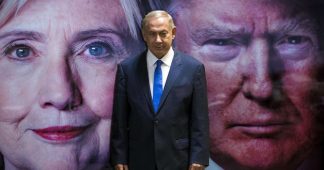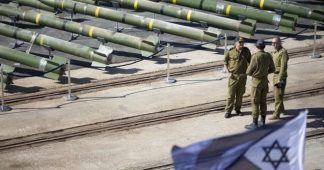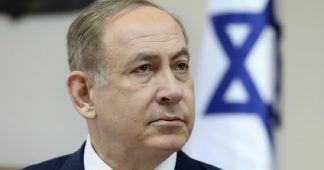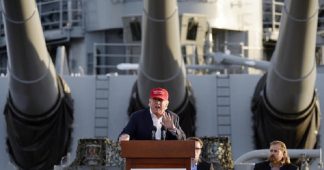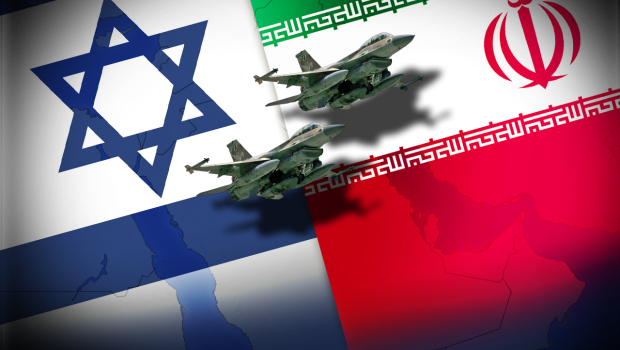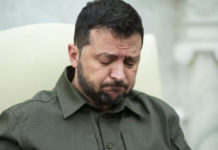Exclusive: President Trump lines up with the Washington Establishment on at least one point: that Iran is the chief source of terrorism. The only problem is it’s not true, just one of the “Iran myths,” Ted Snider explains.
By Ted Snider
One of the promises that President Trump has kept is to get tough on Iran. Though he has not canceled the nuclear weapons agreement, the Joint Comprehensive Plan of Action (JCPOA), his administration has “officially put Iran on notice” for a missile test and he has imposed new sanctions.
More ominously, The New York Times reports that Secretary of Defense General James Mattis considered ordering the Navy to intercept and board an Iranian ship in international waters to search it for weapons being shipped to Yemen in support of the Houthi rebels who are facing a fierce U.S.-backed Saudi bombing campaign. According to White House officials, the boarding operation was called off, not because it would likely have been an act of war, but because word of it leaked.
Mattis and the rest of the Trump administration have based this canceled operation and other plans to get tough on Iran on a number of myths about the Islamic Republic. But the myths are not unique to the Trump team; the myths are widely embraced across Official Washington, repeated by Republicans and Democrats alike.
Myth One: Iran Is or Was Developing a Nuclear Bomb
Iranian President Hassan Rouhani has said repeatedly that “We have never pursued or sought a nuclear bomb, and we are not going to do so.” Both Supreme Leader Ayatollah Khamenei and his predecessor, the founder of the Islamic Republic of Iran, Ayatollah Ruhollah Khomeini, have insisted that Iran would never pursue nuclear weapons because nuclear weapons are against the precepts of Islam.
Khamenei has insisted that “from an ideological and fiqhi [Islamic jurisprudence] perspective, we consider developing nuclear weapons as unlawful. We consider using such weapons as a big sin.”
And no one really believes otherwise: not U.S. intelligence and not Israeli intelligence. Former CIA director and Secretary of Defense Leon Panetta asked, “Are they [Iran] trying to develop a nuclear weapon?” and succinctly and pointedly answered: “No”. The 2007 National Intelligence Estimate (NIE), representing the collective conclusions of all of America’s many intelligence agencies, said with “high confidence” that Iran was not building a nuclear weapon. A 2011 NIE said “the bottom-line assessments of the [2007] N.I.E. still hold true. We have not seen indications that the government has made the decision to move ahead with the program.”
Yuval Diskin, the man who headed Shin Bet, the Israeli domestic intelligence agency, for six years, accused Prime Minister Netanyahu of “misleading the public on the Iran issue.” And Lieutenant-General Benny Gantz, then Chief of Staff of the Israeli Defense Forces, insisted that Iran has not “made the decision” to pursue a nuclear weapons program. Then-Defense Minister Ehud Barak, clearly stated that “it is not the case” that “Iran is determined to . . . attempt to obtain nuclear weapons . . . as quickly as possible.” He added rhetorically, “To do that, Iran would have to announce it is leaving the inspection regime . . . . Why haven’t they done that?”
Former director of the International Atomic Energy Agency Mohamed ElBaradei told investigative journalist Seymour Hersh that “[d]uring my time at the agency, we haven’t seen a shred of evidence that Iran has been weaponizing.”
The bottom line is that no one seriously — not the United States, not Israel, not the I.A.E.A. – ever really believed Iran was developing nuclear weapons. It was just a useful myth for politicians to use to justify continued hostilities toward Iran and keep open the possibility of military strikes.
Myth Two: Iran is Not to be Trusted and is Violating the Nuclear Weapons Agreement
General Mattis has said “the expectation” is “that Iran will cheat.” But Iran hasn’t cheated. The latest report by the I.A.E.A says that Iran is “honouring its end of the deal.” And each prior report since the deal was signed has said the same. The latest report says Iran has only about half the low-enriched uranium it is permitted to have under the agreement and that it is not enriching any uranium to the higher amounts that would be needed for nuclear weapons.
But there’s more than one way to cheat a nuclear agreement, the skeptics say. The White House argues that Iran is in violation of the JCPOA due to its testing of a ballistic missile on Jan. 29. But Iran is not violating the JCPOA here either. Iran made agreements about their nuclear program; they never agreed to abandon their conventional weapons program, insisting, like every other nation, on maintaining the right to defend themselves.
Resolution 2231, approved in support of the JCPOA, “calls upon” Iran “not to undertake any activity related to ballistic missiles designed to be capable of delivering nuclear weapons” for a defined period of time. Beyond the fact that the phrasing “calls upon” does not suggest a direct prohibition, Iran insists they are in compliance because the missiles are defensive and are designed to carry a conventional payload: the missiles are not capable of being nuclear armed.
Iran expert Gareth Porter says that Iran’s “ballistic missiles were not designed for nuclear weapons.” Porter cites experts who say that “Iran’s medium-range missiles have been designed for conventional deterrence,” and that “Iran would have to redesign at least the internal components of the missile to adapt it to carrying nuclear weapons.”
Further, the missile was only medium-range and exploded in only about half the distance required to reach Israel and nowhere near the distance to reach America. The official record, then: Iran has consistently complied with the JCPOA nuclear agreement.
Myth Three: Iran is a Destabilizing Force in the Middle East and is the World’s Leading State Sponsor of Terrorism
The day after the U.S. imposed the new sanctions on Iran, General Mattis declared, “As far as Iran goes, this is the single biggest state sponsor of terrorism in the world.” CIA director Mike Pompeo has similarly called Iran “the world’s largest state sponsor of terrorism.” And Trump, himself, told Bill O’Reilly that Iran is “the number one terrorist state.”
There is no intelligence to support this claim although it’s a formulation that is insisted upon by the governments of Israel and Saudi Arabia and is recited by American politicians as a kind of mantra. In reality, the major terrorist groups bedeviling the West, including Al Qaeda and Islamic State, have been supported by Sunni-ruled Gulf States, not Shiite-ruled Iran. Indeed, Iran has helped the governments of Iraq and Syria in their wars against these terrorist groups.
Not only has Iran been a leader in the fight against these terror groups, the claim that it is “the largest” state sponsor of terrorism is absurd given what is now known about America’s Saudi ally’s sponsorship of Salafist terrorists. Senior U.S. officials have acknowledged as much.
As early as December 2009, a State Department cable had declared that “Saudi Arabia remains a critical financial support base for al-Qaeda, the Taliban . . . and other terrorist groups.” A 2012 Defense Intelligence Agency report identified the “supporting powers” of what became Islamic State to be “Western countries, the Gulf States and Turkey.”
On Oct. 24, 2014, Vice President Joe Biden told a Harvard forum, “[O]ur allies in the region were our largest problem in Syria. . . . They poured hundreds of millions of dollars and tens, thousands of tons of weapons into anyone who would fight against Assad except that the people who were being supplied were Al Nusra and Al Qaeda and the extremist elements of jihadis.”
In May 2015, at a meeting at Camp David between President Obama and the princes of the Gulf Cooperation Council that point was reiterated. According to David Ignatius of The Washington Post, at that summit,
“Obama and other US officials urged Gulf leaders who are funding the [Syrian] opposition to keep control of their clients, so that a post-Assad regime isn’t controlled by extremists from the Islamic State or al-Qaeda.”
And Saudi Arabia’s support for the jihadists who became Al Qaeda is nothing new. It dates back to the Saudi-U.S. funding of the Afghan mujahedeen in their war against the Soviet-backed secular government in Kabul in the 1980s. The Saudi financing of these Sunni jihadists continued through the 9/11 attacks and beyond, as the militants served as an irregular paramilitary force for the Saudis to project power against geopolitical rivals.
An important revelation in Seymour Hersh’s reporting on the truth behind the killing of Osama bin Laden in 2011 was that the Saudis had been heavily financing bin Laden and Al Qaeda and that their motivation for keeping bin Laden under wraps was to prevent him from revealing that fact, according to one of Hersh’s sources.
“A worrying factor at this early point, according to the retired official, was Saudi Arabia, which had been financing bin Laden’s upkeep since his seizure by the Pakistanis. ‘The Saudis didn’t want bin Laden’s presence revealed to us because he was a Saudi, and so they told the Pakistanis to keep him out of the picture. The Saudis feared if we knew we would pressure the Pakistanis to let bin Laden start talking to us about what the Saudis had been doing with al-Qaeda. And they were dropping money – lots of it.’”
So, Iran is surely not the chief sponsor of state terrorism and American awareness of this reality may be reflected in Iran’s recent removal from the annual Worldwide Threat Assessment presented to the Senate by then-Director of National Intelligence James Clapper.
Indeed, far from being an exporter of terrorism, Iran has suffered from various forms of terrorist-like aggression from the U.S. and Israel, including the Stuxnet and Flame computer viruses aimed at Iran’s nuclear enrichment facilities, three assassinations and one attempted assassination of Iranian nuclear scientists, and the blowing up of a military arms depot that killed 17 people, including Iranian missile pioneer Major General Hassan Moqqadam.
Myth Four: Iran is Not Really an Enemy of the Islamic State and Al Qaeda
In April 2016, in speech at a Center for Strategic and International Studies event, General Mattis said, “Iran is not an enemy of ISIS. They have a lot to gain from the turmoil in the region that ISIS creates. I would just point out one question for you to look into. What is the one country in the Middle East that has not been attacked by ISIS? One. And it’s Iran. That is just more than happenstance, I’m sure.”
But Mattis’s claim is sophistry. It does not follow that because ISIS has not attacked Iran’s territory that Iran doesn’t consider ISIS an enemy and vice versa. Iranian forces and Islamic State militants have clearly clashed inside Syria where Iran has provided military support for the government.
But there may be many reasons why ISIS hasn’t attacked inside Iran, including a lack of ability to penetrate into Iran or a recognition by ISIS that it is overextended already in its chief areas of operation.
While perhaps pleasing his audience at the neocon-dominated Center for Strategic and International Studies, Mattis’s sophistry also omits key facts, such as Iran’s commitment to fighting Al Qaeda and Islamic State in Iraq and Syria. Even earlier, Iran viewed Al Qaeda and its Taliban allies as existential enemies cultivated by Saudi Arabia and Pakistan in the 1980s as Sunni paramilitaries to pressure Iran from the east while Iraq, then ruled by Sunni leader Saddam Hussein, was attacking Iran from the west.
After 9/11, Iran cooperated with the U.S. against Al Qaeda and the Taliban in Afghanistan. The Northern Alliance, which provided many of the anti-Taliban fighters assisting the U.S. invasion of Afghanistan in 2001, was partly created by Iran, which also offered its air bases to the U.S. and permitted the U.S to carry out search and rescue missions for downed U.S. planes. The Iranians also supplied the U.S. with intelligence on Taliban and Al Qaeda targets.
After the Taliban and Al Qaeda were routed from their Afghan strongholds, Iran helped set up Afghanistan’s new government and offered assistance in rebuilding Afghanistan’s army. Iran also arrested hundreds of Al Qaeda and Taliban fighters who escaped across the border.
Iran experts Flynt Leverett and Hillary Mann Leverett say Iran documented the identity of more than 200 members of Al Qaeda and Taliban who escaped into Iran to the U.N. and sent many of them back to their homelands. For many others who couldn’t be sent back to their own countries, Iran offered to try them in Iran. The U.S. then named several more Al Qaeda operatives that it demanded Iran search for, arrest and deport. According to Hillary Mann Leverett, who was negotiating directly with the Iranians for the White House, Iran captured some and said the others were either dead or not in Iran.
Contrary to Mattis’s false claim, Iran has historically and consistently been an enemy of Al Qaeda and the Islamic State.
Myth Five: Iran is Controlling and Arming the Houthis in Yemen
Constantly being broadcast from Washington is the claim that Iran controls and arms the Houthi rebels in Yemen. But Iran neither substantially arms them nor controls them. The Houthis are an indigenous and independent-minded ethnic group in Yemen that has long played an important role inside the impoverished nation. They ended up in opposition to the Saudi-backed government and in conflict with the Saudi-supported Al Qaeda in the Arabian Peninsula, an Al Qaeda affiliate operating in Yemen.
The U.S. built its case that Iran was supplying weapons to the Houthis on an “assessment” that Iran was using fishing boats to smuggle weapons into Yemen. However, according to Gareth Porter, the U.S. was never able to produce any evidence for the link between Iran and the Houthis because the boats were stateless and their destination was Somalia, not Yemen. An earlier ship was, indeed, Iranian but was not really carrying any weapons.
In fact, Porter reports, when President Ali Abdullah Saleh was forced from power in 2012, he and his son, the former commander of the Republican Guard, maintained control over the army through their allies in the upper ranks. Saleh found himself in a strange-bedfellow alliance with the Houthis because as Jeremy Scahill reports in his book Dirty Wars, Saleh was often at war with the Houthis.
“To justify their wars against the Houthis to the United States, Saleh and the Saudis constantly used allegations of Iran’s support for the Houthis,” Scahill wrote. In other words, Saleh used the same deceptive claims then as the Americans are using now. However, even then, the U.S. knew the Houthi-Iran link was weak, and, as Scahill said, though “Saleh accused Iran of . . . backing the Houthis,” “In a subsequent classified cable, US officials . . . raised serious questions about the extent of Iranian involvement.”
Because of the alliance with Saleh, the Houthis could get all the weapons they wanted from local arms markets and from corrupt Yemeni military commanders. The Houthi-Saleh-army alliance also strengthened the Houthis, making it possible for them to advance and take over military facilities from which they acquired U.S.- supplied weapons.
Just as Iran does not substantially arm the Houthis, so it does not – and really cannot – control them. In 2014, the Iranians discouraged the Houthis from capturing the Yemeni capital, Sanaa, but the Houthis did so anyway.
“It is wrong to think of the Houthis as a proxy force for Iran,” a U.S. intelligence official told The Huffington Post. Yemen specialist Gabriele vom Bruck calls Iran’s influence over the Houthis “trivial” and asserts that the independent-minded Houthis grant Iran no influence over their decision-making.
To the extent that Iran is involved in the Yemeni conflict at all, Iran’s assistance has been a response to the Saudi air war against Yemen, which has killed thousands of Yemeni civilians and pushed the population to the brink of starvation.
Yet, Official Washington’s politicians and pundits – virtually across the political spectrum – continue to insist that Iran is the chief sponsor of terrorism. It is a classic example of how Official Washington, which decries “fake news” and “alternative facts,” is at the forefront of spreading fake news and alternative facts.

